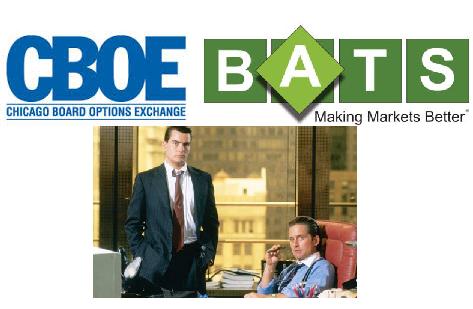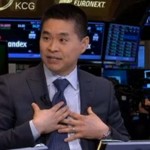Following a decade of new exchange launches, which led to a series of aggressive fee competition to attract order flow and elevated the ‘pay-for-order-flow’ game, the more current trend towards consolidation, fueled by an industry-wide race to zero fees and commissions is sparking rumors that the CBOE and BATS are planning to marry..This on the heels of the still uncompleted deal between Deutsche Boerse and London Stock Exchange (LSE), a transaction that according to one MarketsMuse “has been put on hold pending further impact analysis” of this late summer’s BREXIT vote.”
(Traders Magazine)-CBOE Holdings’ reported talks to acquire Bats Global Markets would be the latest in a long line of exchange tie-ups, with one common denominator: the drive to have more trades execute under the same roof.
“Exchanges are a scale game,” said Brad Bailey, research director at Celent’s securities and investments practice. “Running exchanges in a regulatory, market-structure-complex world is tough. There is tremendous operational leverage available to bigger, more complex exchanges.”
Yesterday, Bloomberg News reported merger talks between CBOE and Bats, citing people familiar with the situation. A deal could be announced within weeks, thought it still may not happen, according to the report.
If you’ve got a hot tip, a bright idea, or if you’d like to get visibility for your firm through MarketsMuse via subliminal content marketing, advertorial, blatant shout-out, spotlight article, etc., please reach out via this link
CBOE’s eponymous options exchange is the largest of 14 in the U.S., with market share of 26.5% this month, according to OCC data. Chicago-based CBOE has a virtual stranglehold in the index-options business via its dominant CBOE Volatility Index (VIX) product.
Bats, which purchased rival exchange operator Direct Edge in 2014 and itself went public earlier this year, runs the BZX and EDGX options exchanges, which have a combined market share of about 12%. Bats also operates four of the 13 U.S. equity exchanges, with a combined market share of about 20%.
Equity and options exchange operator Nasdaq bought options bourse International Securities Exchange earlier this year. In the equities space, IntercontinentalExchange bought New York Stock Exchange in 2013. In Europe, Deutsche Boerse and London Stock Exchange are planning to merge. And there have been a host of exchange mergers over the past half-decade that have been discussed or proposed but ultimately didn’t happen.
“Think about the size and scale across asset classes of most exchanges,” Bailey told Markets Media. “ICE gobbled up NYSE, DB/LSE are attempting a marriage despite the complexities that Brexit has added to that equation.”
MarketsMuse editors are gearing up to profile ‘What’s Next?’ Anti-Trust Fever Sweeps Regulators as Exchanges Consolidate to Revert To Predatory Pricing Model..” To read the entire story CBOE Rumored to Merge with BATS Exchange from Traders Mag, click here





 For those following this deal, today’s WSJ column by Jason Bunge profiles the mindset of ICE CEO Jeffrey Sprecher, and it speaks volumes. It also raises concerns on the part of Wall Street’s biggest firms, who, along with exchanges, reap tens of millions of dollars in fees that more than a few consider to be wrought with conflict, and are necessarily loathe to put the genie back in the bottle.
For those following this deal, today’s WSJ column by Jason Bunge profiles the mindset of ICE CEO Jeffrey Sprecher, and it speaks volumes. It also raises concerns on the part of Wall Street’s biggest firms, who, along with exchanges, reap tens of millions of dollars in fees that more than a few consider to be wrought with conflict, and are necessarily loathe to put the genie back in the bottle.